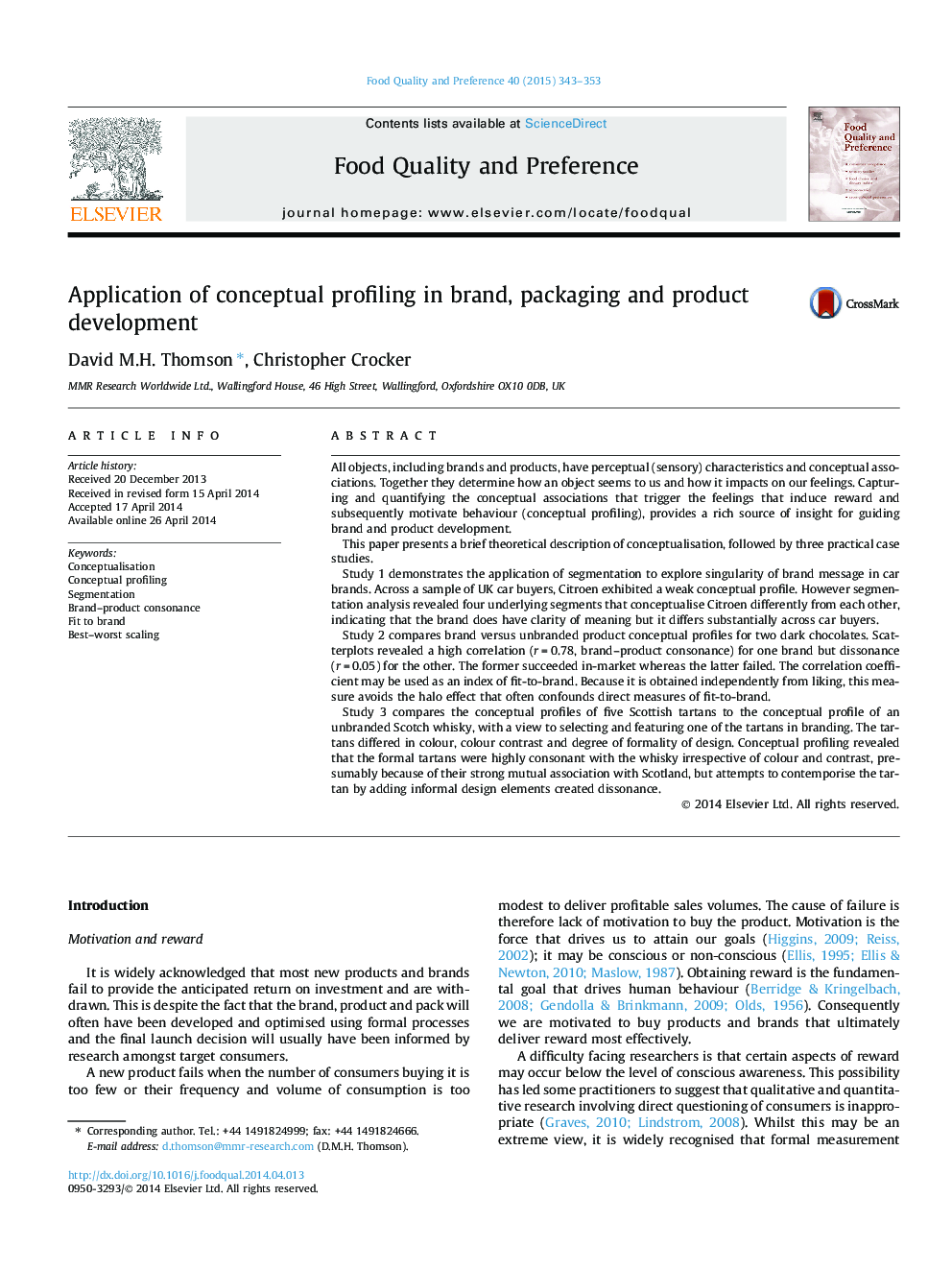| کد مقاله | کد نشریه | سال انتشار | مقاله انگلیسی | نسخه تمام متن |
|---|---|---|---|---|
| 4317047 | 1613157 | 2015 | 11 صفحه PDF | دانلود رایگان |
• A theoretical description of conceptualisation and its influence on behaviour.
• Theoretical comparison of conceptual profiling versus emotion profiling.
• Segmentation of conceptual profile reveals heterogeneity of brand message.
• Derived index of fit-to-brand reveals dissonance in failed new product.
• Brand graphics screened/selected on basis of fit of conceptual profiles to product.
All objects, including brands and products, have perceptual (sensory) characteristics and conceptual associations. Together they determine how an object seems to us and how it impacts on our feelings. Capturing and quantifying the conceptual associations that trigger the feelings that induce reward and subsequently motivate behaviour (conceptual profiling), provides a rich source of insight for guiding brand and product development.This paper presents a brief theoretical description of conceptualisation, followed by three practical case studies.Study 1 demonstrates the application of segmentation to explore singularity of brand message in car brands. Across a sample of UK car buyers, Citroen exhibited a weak conceptual profile. However segmentation analysis revealed four underlying segments that conceptualise Citroen differently from each other, indicating that the brand does have clarity of meaning but it differs substantially across car buyers.Study 2 compares brand versus unbranded product conceptual profiles for two dark chocolates. Scatterplots revealed a high correlation (r = 0.78, brand–product consonance) for one brand but dissonance (r = 0.05) for the other. The former succeeded in-market whereas the latter failed. The correlation coefficient may be used as an index of fit-to-brand. Because it is obtained independently from liking, this measure avoids the halo effect that often confounds direct measures of fit-to-brand.Study 3 compares the conceptual profiles of five Scottish tartans to the conceptual profile of an unbranded Scotch whisky, with a view to selecting and featuring one of the tartans in branding. The tartans differed in colour, colour contrast and degree of formality of design. Conceptual profiling revealed that the formal tartans were highly consonant with the whisky irrespective of colour and contrast, presumably because of their strong mutual association with Scotland, but attempts to contemporise the tartan by adding informal design elements created dissonance.
Journal: Food Quality and Preference - Volume 40, Part B, March 2015, Pages 343–353
